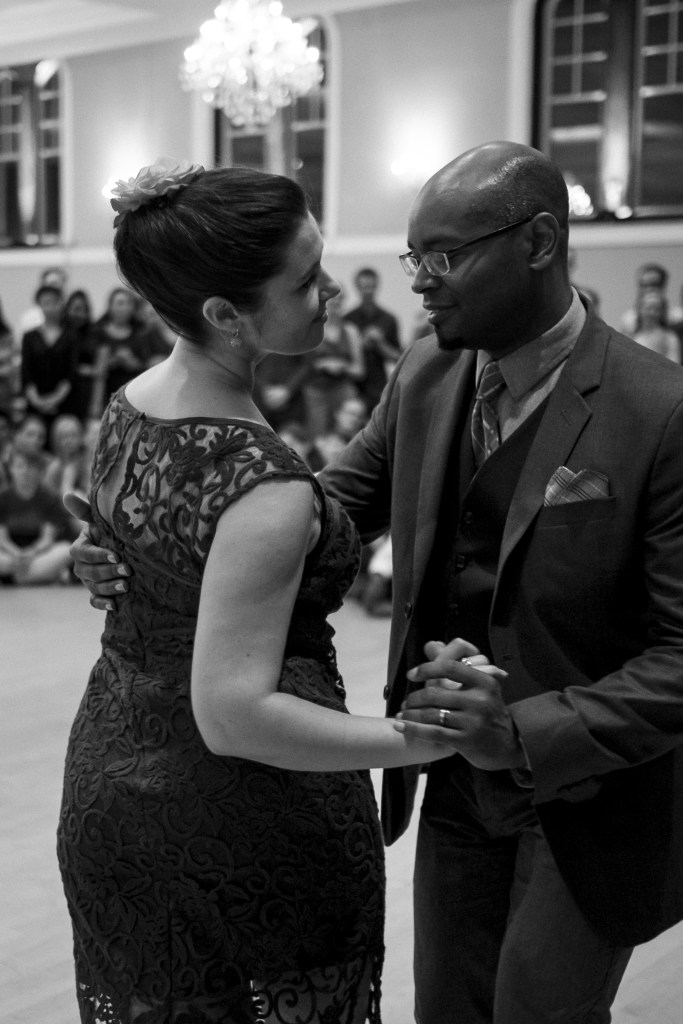Rather than reinvent the wheel, check out this great overview of Blues dancing by Blues dancer and instructor Laura Chieko!
Are you curious about what blues dancing is? Are you looking for a good way to explain what blues dancing is to new or interested community members? There’s a lot of information out there, but when you’re just starting out it can be a little bit overwhelming!
There is certainly a lot of information out there, so let’s start with a general definition:
Blues dance is a family of Black American vernacular dances danced to blues music; dances within this family are linked by shared aesthetics and techniques rooted in Black American traditions and historical context.
Blues Music and History
The modern blues dance community is fairly new and largely grew out of the Lindy hop dance community. However, the music and dance have a much longer history; blues originated from Black American communities. Understanding and appreciating this history and culture helps us honor the music, the dances, and the communities that gave rise to both. It can be tricky to appreciate someone else’s culture without appropriating it; to read more about this in the modern blues world read this blog post by Damon Stone.
Key tidbits
- Blues music was influenced by negro spirituals and work songs, which were in turn influenced by African music and rhythms. Blues music also predates jazz music which rose after the American civil war.
- There are a myriad of sub-genres within blues music (e.g. Mississippi delta, Chicago, Piedmont), if you want to dive into blues music, go to allmusic.com.
- Blues music arose from slave communities and slave traditions, in response to Jim Crow era laws and segregation. The music provided an outlet and social commentary of the everyday lives of the musicians and people of the time. The music encompasses a wide range of emotions such as loss, sorrow, joy, and longing.
If you are interested in learning more about the history of blues music, blues dancing, and the black culture behind both of these things, then these books are a great place to start:
- Jookin’ by Katrina Hazzard-Gordon
- Jazz Dance by Marshall and Jean Stearns
- Stomping the Blues by Albert Murray
To dive deeper into blues history and culture, check out the Blues and Jazz Dance Book Club. If you’re interested in academic research on blues music, history, and culture, check out Dr. Christopher Wells at ASU and Dr. Braxton Shelley at Harvard, Dr. Thomas DeFrantz at Duke, and Richard Powers at Stanford.
Blues Dance
As different styles of blues music developed around the country, the conglomeration of blues dances evolved in parallel with these regional music styles. While blues isn’t a single dance, the many blues idiom dances (e.g. slow drag, struttin’) are united in shared aesthetics and techniques, commonly referred to as the blues aesthetic.
- Blues aesthetic includes the use of broken lines, groundedness, asymmetry, pulse, ephebism, and the aesthetic of cool.
- Close embrace is the primary connection point in most blues idiom dance. This dance position involves connection between the upper chest of two partners. However, you will see a variety of other dance positions on the modern dance floors such as closed position, open position, and breakaway dancing.
- Blues music and dancing has an extremely wide range of expression from thoughtful, to sad, to playful, to powerful, and sorrowful. This is one of the reasons I love this family of dances!
- Blues dance isn’t inherently sexual. It can be suggestive, sensual, and a variety of other emotions. Blues can be sexual between two consenting adults, but then again, so can really any dance style.
To learn more about the myriad of blues moves and dances, check out Blues Moves. They are constantly curating lists of videos showcasing the blues idiom dances!
Modern Blues Dance Community
Another great way is to social dance and take classes. You should definitely check out your local scenes for dances and classes, if you are local to the New York City area, check out Blues Dance New York. It can also be extremely rewarding to travel to weekend events! Here you can take classes from world-renowned blues dance instructors and meet other blues dancers from around the world. Check out Blues Cal for a calendar of all the blues events in the world to see which ones fit your schedule.
Blues Dance World — event videos and monthly podcast
So Yeah Blues Dance — tumbler for every blues dancer
I hope this helps you start on your blues journey!
Best,
Laura
Many thanks to Caroline Leitschuh of RDU Blues, Christopher Gauntt of Atomic Blues, and Odysseus Bailer for their many comments and thoughts on this post. Their feedback was very valuable, this post would be much poorer without their assistance!
The above post was taken with permission from a blog post written by Laura Chieko. Based in New York City, Laura is a blues dance instructor and organizer with a passion for curriculum development, dance shoes, and rocking the color orange. Laura loves blues for its emphasis on connection and the rich musical diversity which she seeks to celebrate on and off the dance floor. Come dance with her in New York City, or learn more about her at www.laurachieko.com!
Want more? Check out this video, this video, this video, and this video!
